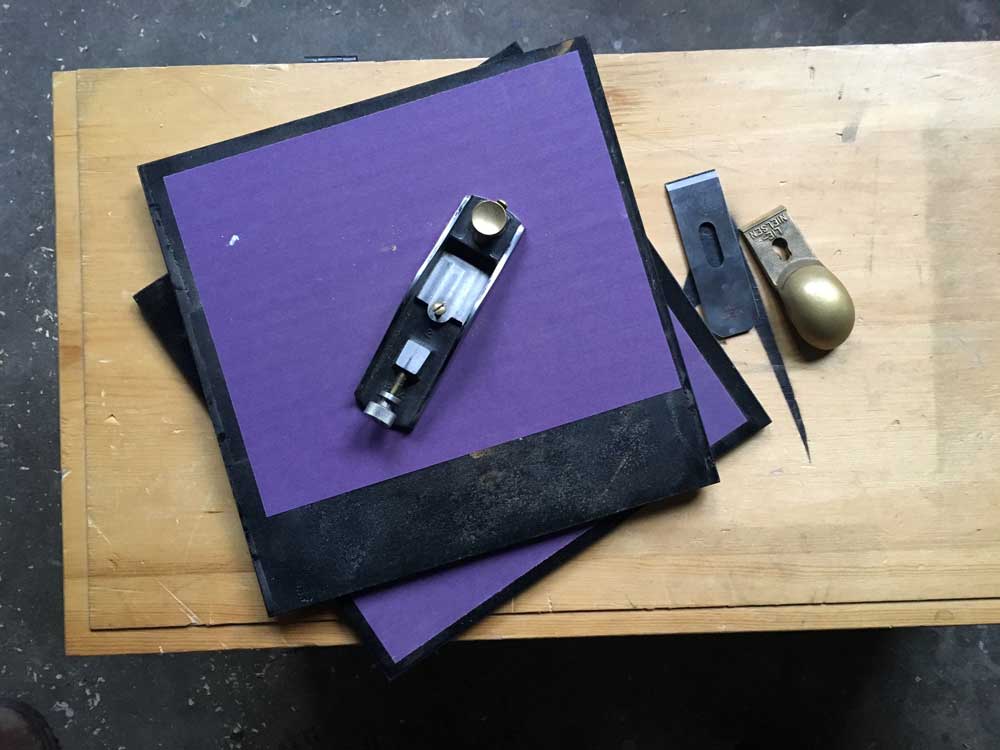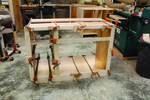We may receive a commission when you use our affiliate links. However, this does not impact our recommendations.
Big fat granite surface plates are nice, but they are overkill for most woodworking shops. The granite surface plates are intended for machinists and other metalworkers who work to thousandths or ten-thousandths of an inch.
We work with material that changes size when you breathe on it.
I’ve found that I don’t need a granite surface plate in my shop. Instead, I use granite floor tiles from the home center that are $4.99. When I shop for them, I take a straightedge (or borrow an extruded aluminum one from the tool section of the home center) to check the tiles for flatness.
Some tiles are double-dog dang flat (it’s not a machinist’s spec, but it’s fine for woodworking). I can’t even get a .001” feeler gauge under the straightedge.
You might be wondering: What good are granite tiles in the workshop? Lots of things. When I need to correct or clean up the soles of my small planes, I affix #220-grit sandpaper to my tile and use it to remove burrs from the soles or to correct minor problems.
When I need to sand small parts with great accuracy, I affix sandpaper to the tile and then rub the part on the sandpaper to do the job.
When I fix old tools or prepare new ones to use, I affix #100-grit cubic zirconia belt sander paper (the blue stuff) to the tile and it flattens the backs of chisels and plane irons with ease.
In a pinch, I can flatten my waterstones on it with some wet/dry sandpaper.
The best thing about it? If someone drops it on the floor and it breaks, I’m out only $5.
So, save your money. Spend the cash you socked away for a granite surface plate on a nice chisel, your spouse, your kids or something else.
— Christopher Schwarz
Read other entries in the Anarchist’s Gift Guide.
Here are some supplies and tools we find essential in our everyday work around the shop. We may receive a commission from sales referred by our links; however, we have carefully selected these products for their usefulness and quality.











Another source is a granite shop. They are usually glad to give away sink cutouts from their counter fab work. Black granite I the hardest, and usually the flattest. Black shows every irregularity so it needs to be flat. The slab I kept seems as flat as a test granite.
It saves them dump fees. The guys who did my counter work keep a couple hundred on the back loading dock
I use these also. But I do not carry a straight edge and feeler gauge. Just hold the tile and look at the reflection of the fluorescent tubes in the overhead lighting. If everything is nice and straight the tile is flat enough. Never had a problem with this method.
Thanks for the post, Chris. I was actually shopping for a granite plate. How do you like to adhere the abrasive paper, and what is the best way to clean the adhesive off?
Granite tiles are certainly easier to move, easier to store, easier to work around, etc. And I agree that the surface plate is overkill by several orders of magnitude.
Heck, many folks have considered the top of the tablesaw more than flat enough as a reference.
But the cost savings isn’t all that huge; you can get a 2″-thick surface plate with about the same surface area as the tile for under $35. And the fact that it’s a pain to move might help reserve counter space as a dedicated sharpening bench.
Still, saving $25 (assuming at least one replacement) is not to be sneezed at. And this is certainly an interesting alternative to using plate glass (probably about as flat as the selected tile).
How do you affix the sandpaper? With glue or do you let it overhang and use some tape? And if you do use glue, what type/kind? And how easy is to remove the sandpaper when your done?